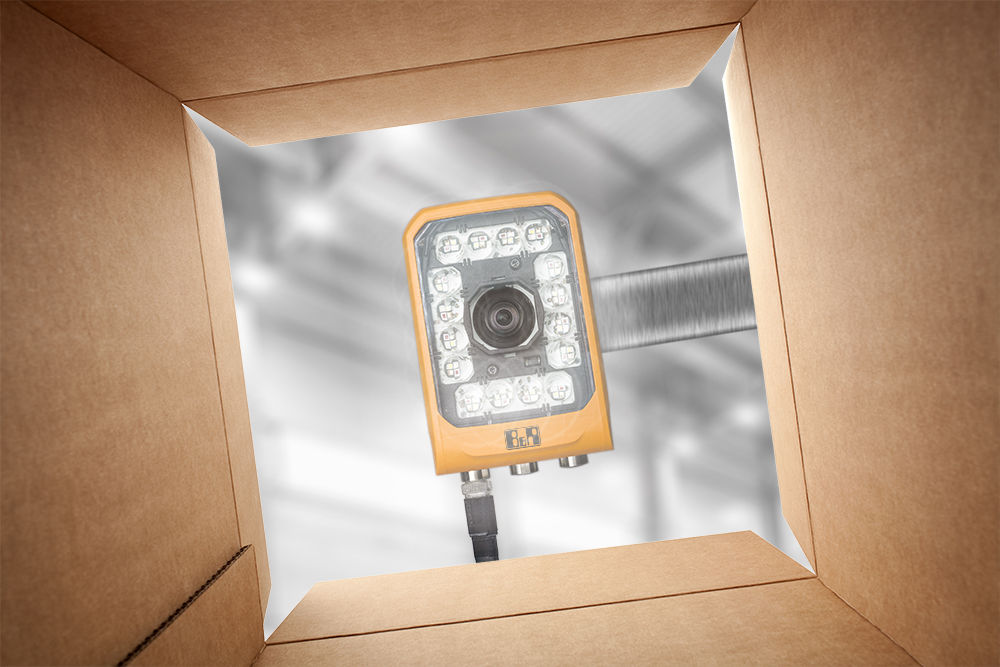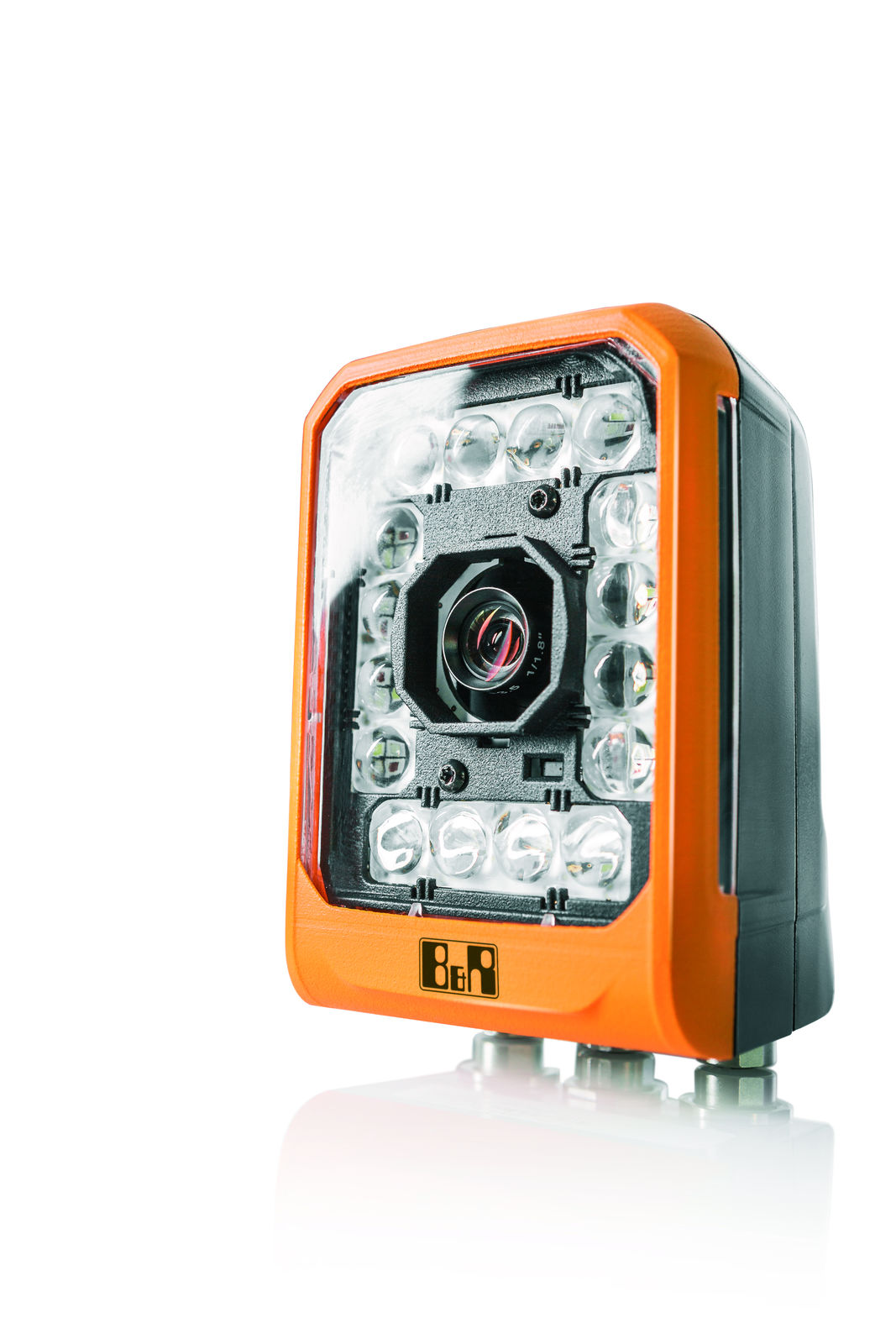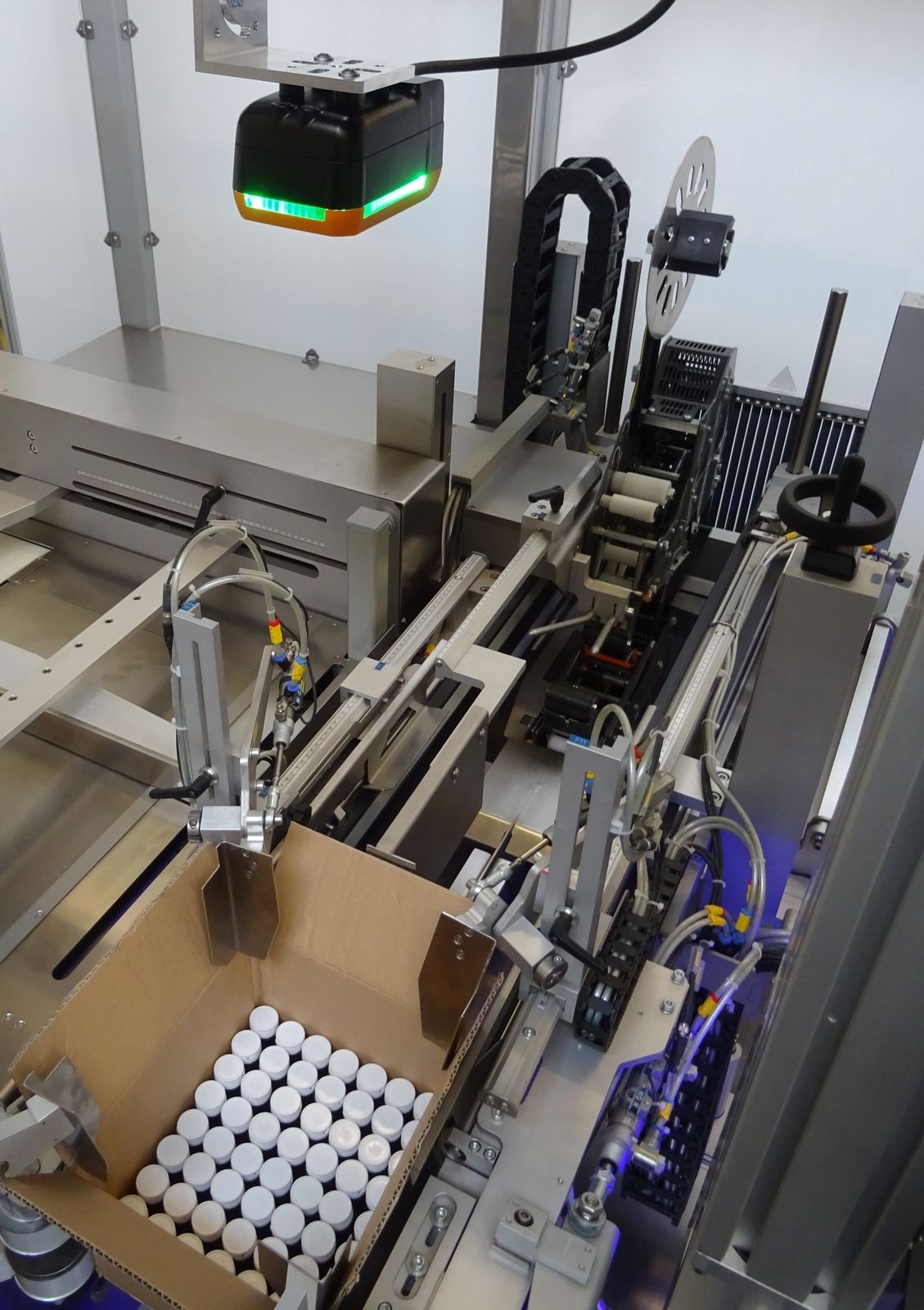With the goal of making inspection more flexible and efficient, while at the same time saving costs – Christ Packing Systems knew it would have to look beyond light curtains and conventional cameras for its new fully automated horizontal case packer, CaseTeq. Instead, the packaging machine specialist turned to the fully integrated machine vision system from B&R.

"We offer product presence verification as a standard feature of our packaging machines. However, the type and scope of inspection this requires varies greatly depending on the customer, the product being packaged and the machine type," explains Timo Bochtler, head of electrical engineering at Christ Packing Systems. "In the past, we've used two different inspection systems for our horizontal and vertical case packers (top and side loaders): light curtains and conventional camera systems."
On a vertical case packer, bundle control can be implemented quite simply and cost-effectively using a light curtain: When a layer of products is pushed from the stacking area into the carton, the beams of the light curtain verify that no products are missing. The curtain is oriented with the beams perpendicular to the layer. If the layer is complete, the light beams will remain interrupted for a certain period of time as the layer is pushed through. If a product is missing and the beams are able to pass through, the change in beam interruption time causes an error message.
Light curtain: Simple but inflexible
In addition to the low hardware costs, inspection with a light curtain offers a further advantage: When changing to a different format, the user can easily adapt the inspection process to the new conditions via the operator interface. All they have to do is set the start and end position (width) of the stack, as well as the number of required beams and the corresponding beam interruption time. However, a few test runs must first be completed before actual full-scale production can begin. These are needed to confirm whether the selected light beam configuration delivers reliable results.

If the layer contains rounded products, there will be gaps between them that allow the beams through – triggering an error message. To avoid that, the operator needs to disable the respective beams. "Sometimes you even have to disable two beams on top of each other to keep production running smoothly. But, whenever you do that, you also reduce the quality of the verification results," Bochtler knows from experience. "You also run the risk of operators forgetting to re-enable the beams when they change formats." Either way, light curtains have difficulties scanning layers of many small products and dealing with unexpected changes in requirements.
Traditional camera: complex, costly and cumbersome
The horizontal case packing process does not allow for the use of a light curtain. So far, Christ has therefore used a camera mounted on the pick-and-place axis to verify packing completeness on its horizontal case packer. For image processing, Christ took the classical approach with a system made up of a camera, a lens, an image processing system (generally a PC), special image processing software, and lighting elements as needed.
This solution is more complex and expensive than a light curtain, but provides additional flexibility, performance and reliability. It is also able to perform bundle checks and other more complex inspections, such as recognizing positions and patterns or reading codes and text.
The downside of the camera solution is the hefty price tag for all that hardware and software. Another factor that should not be underestimated is the added time and effort for the machine's software developers: traditionally, machine vision has been a stand-alone system, so the programmers would have to learn to work with proprietary software and additional interfaces. There are also strict limitations to how well the image processing software can be integrated into the machine application. On top of that, anyone who uses the image processing software requires special training. For the manufacturer, this usually means relying on third-party support.
Also of great significance for those involved: The system needs to be calibrated in the field after installation and every time a piece of hardware is been replaced. "We're skilled mechanical engineers, but we are not camera specialists. We don't have the experience to know which situations will require lighting which won't," says Bochtler, focusing on another critical aspect of conventional camera solutions.
A machine builder who tries to cut costs by going without lighting runs the risk of having to retrofit lights later on. On the other hand, if they install lights that turn out not to be required, the investment would be wasted. In short, all the inspection solutions Christ had tried in the past had come with unpredictable risks and hidden costs.
The solution: Integrated machine vision from B&R
When B&R first presented its integrated machine vision system to the Christ management team, they took notice immediately. The reason is fairly easy to see: Woven neatly into the B&R Automation Studio engineering software, the vision system is exceptionally approachable and manageable for the machine builder and its developers. From the comfort of their familiar automation environment, they have access to all the camera functions they need and easily integrate them into the machine application. No specialist image processing know-how is required, so introductory training is kept to a minimum.
The comprehensive portfolio offers the right combination for any set of requirements. It includes an array of different camera types with integrated lighting, a variety of resolutions and accessories such as external lighting. What truly sets the solution apart is the level of integration: all the components are connected by a common network and controlled by the same application. That's what makes it possible to synchronize the flash and shutter timing in the sub-microsecond range and make the most efficient utilization of the LED components.
Scalable and easy to use
In circumstances that require just one specific image processing function, such as reading a QR code or position detection, the Smart Sensor version of B&R's camera is the right choice. Unlike many other devices in its class, there is no need to install extra camera hardware for each function that is required. Instead, the user simply configures the desired Smart Sensor function as needed in the Automation Studio engineering environment.

In cases that call for multiple functions, it's easy to upgrade to a more powerful Smart Camera. Any application software, parameters and models that have already been developed can continue to be used. The camera and lens come factory calibrated, so there's no need to repeat this step when commissioning the B&R vision product. Installation could hardly be easier, because the camera gets all the settings automatically from the controller.
Changeover at the push of a button
The tightly integrated B&R solution has advantages for the user as well. All the parameters, including the focus setting, can be saved as recipes and loaded at the push of a button to accommodate a new case format. "Even if the data for a product or case format is not yet available, that's no problem. You just need to teach it a new product and enter how the products are arranged in the layer. The system handles the rest. That's one of my favorite parts," admits Bochtler.
Implementing rapid product changeover is even easier when the machine controller is also from B&R, Christ was happy to learn. The system configuration and recipe management system can then be integrated directly into the HMI application. The familiar tools of the Automation Studio environment can be used for diagnostics. B&R's mapp Vision software component gives the programmers access to the HALCON machine vision library from MVTec. This library is full of field-proven, ready-to-use algorithms for position detection, completeness verification, quality assessment, measurement and identification. "They make it easy for automation specialists like us to implement machine vision solutions on our own after only a brief introduction," says Bochtler happily.
New inspection solutions
Because of the advantages offered by the B&R vision system, Christ decided to introduce its first fully automated horizontal case packer, with layer completeness verification performed using the new machine vision solution from B&R. The company plans to add new inspection tasks based on the B&R system in the near future with the ultimate goal of converting all of its secondary packaging machines to the new technology.
"The vision package from B&R has everything we need. With their scalable solution, we're able to replace the separate control systems we used to need with a single, fully integrated solution for machine vision," explains Bochtler. "On top of being more economical, it adds valuable flexibility and reliability to the inspection process. At the same time, it reduces the risk of unpleasant surprises for us and our customers."

Author: Franz Rossmann, technology journalist from near Munich
 | Timo Bochtler Head of Electrical Engineering, Christ Packing Systems "The vision package from B&R has everything we need. With their scalable solution, we're able to replace the separate control systems we used to need with a single, fully integrated solution for machine vision. On top of being more economical, it adds valuable flexibility and reliability to the inspection process. At the same time, it reduces the risk of unpleasant surprises for us and our customers." |